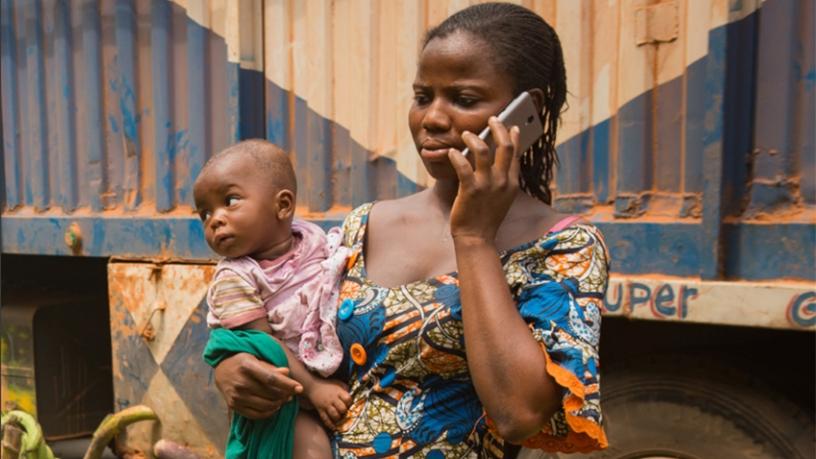
Over 1.2 billion women in low- and middle-income countries do not use mobile Internet and 184 million fewer women than men own mobile phones in these countries.
This is according to a new report from the GSM Association (GSMA) titled: The Mobile Gender Gap Report 2018. The analysis is based on findings from quantitative face-to-face surveys in 23 low- and middle-income countries across Asia, Africa and Latin America. This includes SA.
The research found women in these countries are 10% less likely to own a mobile phone than men, which translates into 184 million fewer female owners.
"With over five billion subscribers worldwide, mobile is one of the most far-reaching technologies in history," says the report.
"It has the capacity to deliver transformative services and opportunities to users, especially access to the Internet. In fact, for most of the world's population, mobile is the primary way to access the Internet, with close to 3.3 billion people subscribing to mobile Internet services.
"[Mobile] can empower women by making them feel safer and more connected, and provide access to information, services and life-enhancing opportunities like health information, financial services and employment opportunities, often for the first time."
However, the report found that in today's increasingly connected world, women are being left behind.
"While mobile connectivity is spreading quickly, it is not spreading equally. Unequal access to mobile technology threatens to exacerbate the inequalities women already experience."
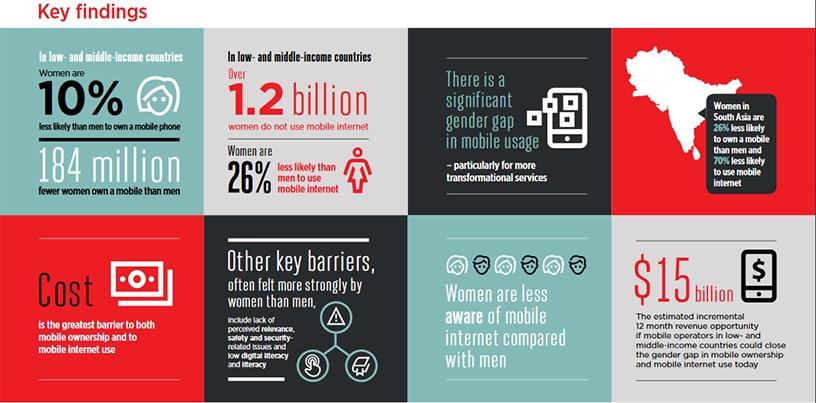
South Asia has the largest average gender gap in mobile ownership (26%) and mobile Internet use (70%), followed by Sub-Saharan Africa's mobile ownership (14%) and mobile Internet use (34%).
The report defines a mobile Internet user as a person who has used the Internet on a mobile phone at least once in the last three months. Mobile ownership refers to personally owning a SIM card, or a mobile phone which does not require a SIM, and using it at least once a month. Mobile Internet users are not necessarily mobile phone owners and could have accessed the Internet on someone else's phone.
Ownership issues
The report found there is "a substantial and persistent gender gap" across these countries, where 390 million women are unconnected. Sub-Saharan Africa women are on average 14% less likely to own a mobile phone than men, which is higher than the overall average of 10%.
The analysis estimates that in 86% of these countries, more men than women own mobiles, and 58% of these regions have a gender gap greater than 5%.
Corroborating previous studies, the analysis found a strong negative correlation between women's education and income levels and a gender gap in mobile ownership.
Analysis also found a negative correlation between the level of mobile phone penetration and the gender gap in mobile ownership, so countries with lower overall rates of mobile ownership are more likely to have a larger gender gap in mobile ownership.
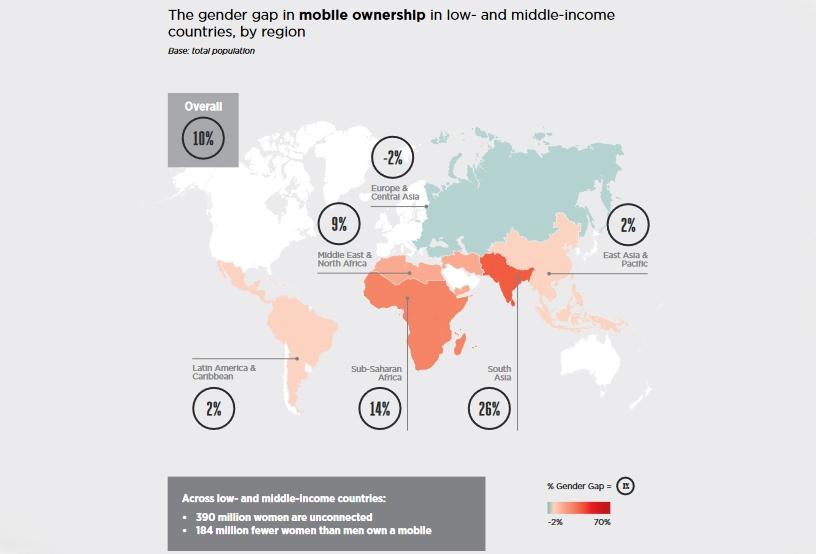
GSMA found that even when women own mobile phones, there is a significant gender gap in usage, particularly for more transformational services, such as mobile Internet.
Over 1.2 billion women in these countries do not use mobile Internet. Women are, on average, 26% less likely to use mobile Internet than men. Even among mobile owners, women are 18% less likely than men to use mobile Internet.
In most of the 23 countries surveyed, women and men used voice calling at similar levels. In comparison, SMS use was found to be lower for women in around half of these areas. The gender gap in mobile Internet use is greater than the mobile ownership gap in 19 of the 23.
In several countries, women's mobile Internet use remains extremely low; for example, in Tanzania, only 23% of female mobile owners recently used the mobile Internet, compared to 36% of males.
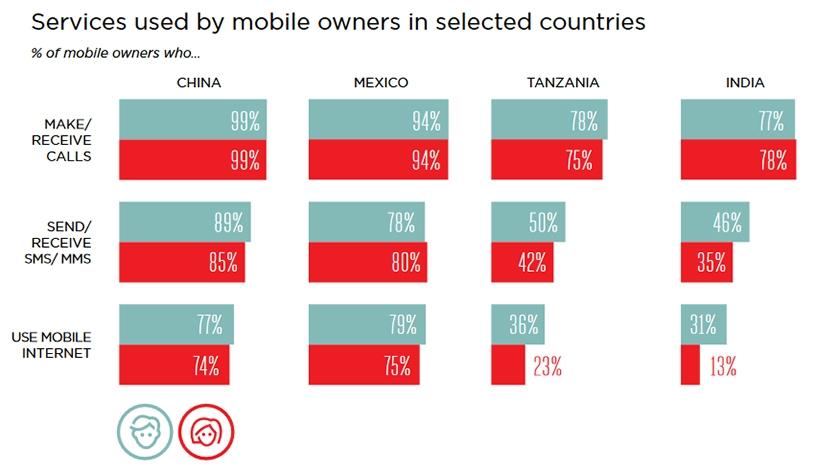
The report found the gender gap in mobile Internet use is considerably wider than the mobile ownership gap in all regions.
Women are 26% less likely than men to use mobile Internet, which translates into 327 million fewer women than men using mobile Internet. In Sub-Saharan Africa, women are 34% less likely than men to use mobile Internet, while in South Asia the figure is as high as 70%.
"While the gender gap in mobile ownership is a significant factor in the mobile Internet gender gap, it does not fully explain the scale of the disparity. Even among mobile owners, women are on average 18% less likely to use mobile Internet than men."
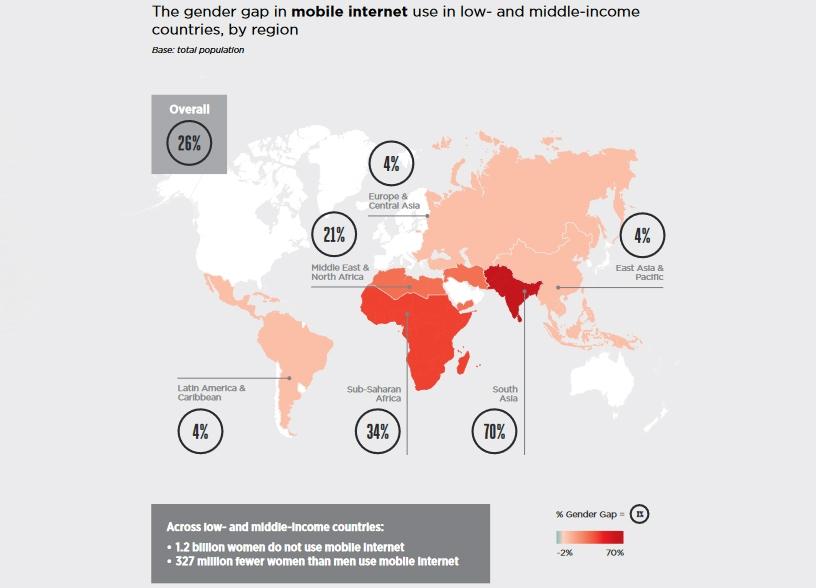
Affordability hurdle
Cost remains the greatest barrier to owning a mobile for both men and women. Although cost is an important consideration for both, this barrier disproportionately affects women.
"In almost all the sample countries, the greatest barriers to mobile Internet use are access to, and the cost of, Internet-enabled handsets and data (cost of credit). These barriers are clearly interlinked, representing the importance of the overall cost of mobile Internet access," GSMA says.
In Africa, these costs were a major factor for why women did not own mobile phones. In SA, 21% of female non-mobile owners identified handset and SIM costs as a main barrier. This was identified as a key barrier for 23% of women in Ghana, 33% in Cote d'Ivoire, 42% in Tanzania, and 47% in Nigeria. Credit cost also ranked high for South African women, with 25% identifying that as the main barrier to mobile ownership, while 24% of women in Ghana said the same and 29% in Nigeria.
In SA, 11% of women said a main barrier was that they did not know how to use a mobile phone; 11% said the problem was the handset was not in their language, 11% had reading or writing difficulties, and 9% believed mobile was not relevant to them. Personal safety was also a barrier in SA, with 13% worried about strangers contacting them. Other concerns identified by South African women included information security, battery charging, network coverage, lack of access to agent support, lack of ID and family not approving.
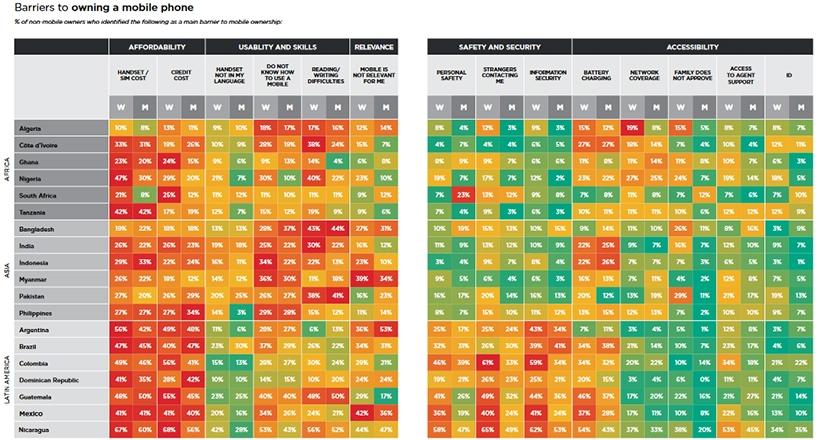
Women are also less aware of mobile Internet compared with men, which significantly limits their uptake, particularly in Africa and Asia.
In Nigeria, for instance, only 45% of women, versus 62% of men, are aware of mobile Internet, precluding Internet use for over half the population.
In SA, the stats are a bit better, with 76% of women aware of mobile Internet versus 83% of men, while in Kenya this is lower with 53% of women aware of mobile Internet versus 71% of men.
Closing the gender gap represents a substantial commercial opportunity for the industry, generating estimated incremental revenue of $15 billion over the coming year.
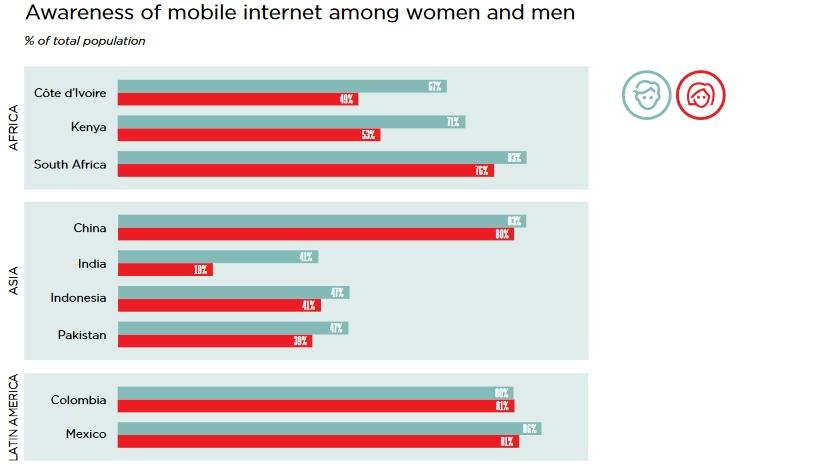
* Graphics courtesy of GSMA Intelligence.
Share